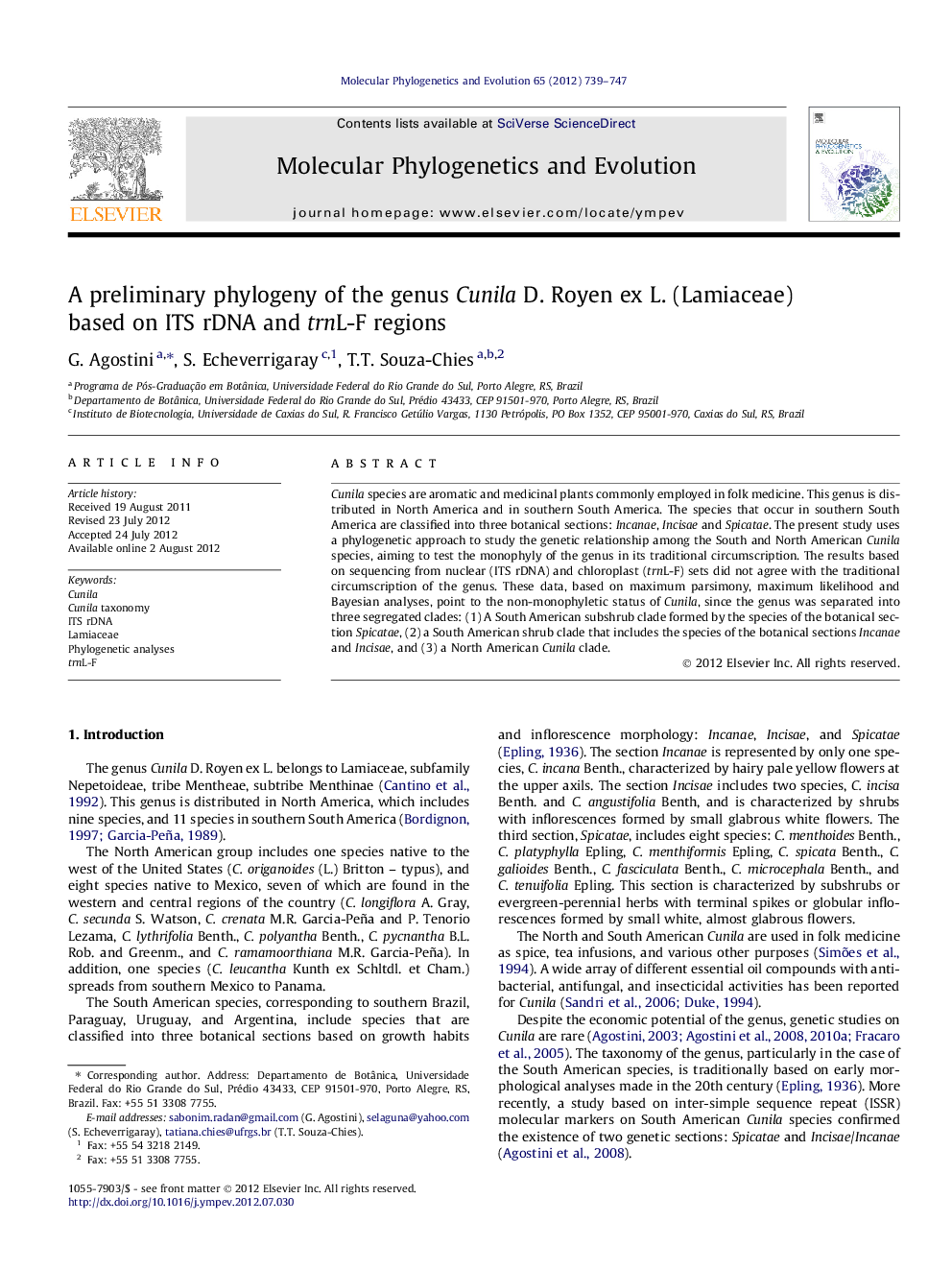| Article ID | Journal | Published Year | Pages | File Type |
|---|---|---|---|---|
| 5919922 | Molecular Phylogenetics and Evolution | 2012 | 9 Pages |
Cunila species are aromatic and medicinal plants commonly employed in folk medicine. This genus is distributed in North America and in southern South America. The species that occur in southern South America are classified into three botanical sections: Incanae, Incisae and Spicatae. The present study uses a phylogenetic approach to study the genetic relationship among the South and North American Cunila species, aiming to test the monophyly of the genus in its traditional circumscription. The results based on sequencing from nuclear (ITS rDNA) and chloroplast (trnL-F) sets did not agree with the traditional circumscription of the genus. These data, based on maximum parsimony, maximum likelihood and Bayesian analyses, point to the non-monophyletic status of Cunila, since the genus was separated into three segregated clades: (1) A South American subshrub clade formed by the species of the botanical section Spicatae, (2) a South American shrub clade that includes the species of the botanical sections Incanae and Incisae, and (3) a North American Cunila clade.
Graphical abstractDownload full-size imageHighlights⺠First phylogenetic study of the genus Cunila. ⺠We investigate the relationships among South and North American Cunila species. ⺠Cunila is supported as polyphyletic. ⺠Taxon sampling is being expanded to address more South American Menthinae and increase resolution within New World groups.
